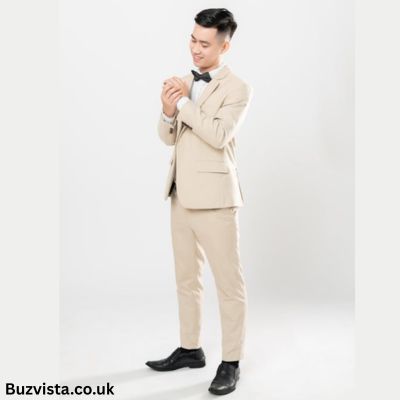Fashion thrives on reinvention, and 2025 is no different. Among the trends that have captured the imagination of style-conscious individuals worldwide is the “blazertje”—a term borrowed from Dutch that literally translates to “little blazer.” Unlike a traditional blazer, the blazertje is shorter, lighter, and far more versatile, making it the perfect wardrobe staple for anyone seeking both elegance and ease.
This article explores the history, styling options, fabrics, cultural resonance, and practical tips for wearing the blazertje. Whether you’re dressing for a casual outing, a day at the office, or a special evening, the blazertje promises to elevate your look while keeping comfort intact.
What Is a Blazertje?
The word blazertje comes from Dutch, where the suffix “-tje” is a diminutive marker, often used to make a word sound smaller or friendlier. Thus, blazertje means “little blazer” or “mini blazer.” While the classic blazer has long been a symbol of structure, formality, and power dressing, the blazertje offers a softer, more approachable take on this iconic jacket.
Typically, a blazertje is:
- Cropped at the waist or slightly below the hip.
- Lightly structured, with soft shoulders and less padding.
- Made from breathable fabrics such as cotton, linen, or lightweight blends.
- Adaptable to multiple occasions—equally at home in streetwear, office attire, and chic evening looks.
The blazertje is less about rigid tailoring and more about fluid styling, which explains why it has been widely embraced across fashion blogs and social platforms.
Blazertje vs. Classic Blazer
It’s easy to confuse a blazertje with a blazer, but subtle differences make the two distinct:
- Length: A blazer often falls mid-hip or lower, while a blazertje usually stops at the waist or just below.
- Structure: Classic blazers come with padding, lining, and formality. Blazertjes lean toward unstructured designs, often half-lined or unlined.
- Purpose: Blazers historically belong to formalwear; blazertjes blur the line between casual and dressy.
- Styling freedom: With a blazertje, sneakers, shorts, or flowy dresses all work seamlessly. With a blazer, the styling is often more rigid.
In short, while the blazer commands authority, the blazertje offers approachability and creative freedom.
The Rise of the Blazertje Trend
Why has the blazertje suddenly become a buzzword in 2025? The reasons are cultural, social, and practical:
- Streetwear influence: Instagram, TikTok, and Pinterest are awash with influencers layering blazertjes over crop tops, oversized trousers, or slip dresses.
- Work-casual balance: With hybrid work schedules, the demand for polished yet comfortable clothing has grown. A blazertje ticks all boxes: professional enough for a meeting but relaxed enough for a café.
- Seasonal versatility: It transitions easily across seasons—linen for summer, velvet for winter.
- Inclusivity: Fashion blogs stress its gender-neutral appeal, styling it for both men and women.
The blazertje’s multi-context adaptability makes it not just a fleeting trend but a likely wardrobe staple.
How to Style a Blazertje
One of the greatest appeals of a blazertje is its versatility. Here are styling ideas for different occasions:
1. Casual Day Out
Pair a neutral-colored blazertje with:
- A plain white tee
- Light-wash denim jeans
- White sneakers
This creates an effortless look—comfortable yet polished.
2. Office-Ready Ensemble
For a professional vibe:
- Choose a structured black or navy blazertje.
- Pair with tailored trousers or a pencil skirt.
- Add loafers or block heels.
The shorter length ensures you look smart but approachable, avoiding the stiffness of traditional office blazers.
3. Evening Chic
Heading out for drinks or dinner? Try:
- A satin or velvet blazertje in jewel tones.
- Pair with a slip dress or fitted jumpsuit.
- Complete with strappy heels and a statement clutch.
The texture alone elevates your outfit into an evening-ready statement.
4. Streetwear Statement
Oversized blazertjes are dominating street style. Wear one with wide-leg trousers, a crop top, and chunky sneakers. Add accessories like a baseball cap or layered necklaces for an urban finish.
Fabrics & Seasonal Choices
The choice of material can transform a blazertje from summer essential to winter statement piece:
- Cotton/Linen: Ideal for warmer months, breathable and airy.
- Wool: Perfect for autumn, offering warmth while retaining a structured silhouette.
- Velvet/Satin: Suited for festive or evening wear. Adds luxury and sheen.
- Polyester blends: Affordable, wrinkle-resistant, and versatile for daily wear.
When shopping for a blazertje, fabric should be your first consideration. Each material dictates when and where the piece will shine.
Global & Cultural Appeal
While rooted in Dutch linguistics, the blazertje’s influence has gone global. Fashion-forward cities such as Amsterdam, Paris, Milan, and New York are showcasing it in both runway collections and streetwear scenes.
Interestingly, its diminutive name plays into its popularity: the word itself feels approachable, fun, and less intimidating than “blazer.” In Dutch culture, diminutives often add warmth to words, which perfectly reflects the blazertje’s friendly, easygoing style.
Shopping & Fit Guide
If you’re planning to buy your first blazertje, here’s what to keep in mind:
- Fit: Look for a clean shoulder line without excess padding. The jacket should sit snugly but not tightly around the waist.
- Length: Waist-length is classic, but slightly longer blazertjes offer more coverage for versatile styling.
- Fabric: Invest in cotton/linen for everyday wear; reserve velvet/satin for occasions.
- Color palette: Start with neutrals like black, beige, or navy. Then add bold options like emerald or mustard.
- Price point: Blazertjes range from affordable fast-fashion brands to luxury designer labels, so there’s an option for every budget.
Caring for a Blazertje
To extend the life of your blazertje:
- Always check the care label. Some fabrics (like satin or velvet) require dry cleaning, while cotton/linen may allow gentle hand wash.
- Store properly. Use a hanger to maintain shape; avoid folding.
- Brush fabrics. Regularly brushing wool or velvet prevents dust buildup.
- Rotate use. Wearing it sparingly between washes helps preserve fabric quality.
With proper care, a good blazertje can last for years.
Why the Blazertje Is Here to Stay
Unlike passing fashion fads, the blazertje solves real wardrobe challenges. It’s lightweight, easy to pair, and adaptable across situations. In an era when consumers value functionality, sustainability, and longevity, the blazertje aligns perfectly with modern fashion values.
Its cultural backstory, social media boost, and global adoption suggest it’s not just a Dutch curiosity but a worldwide trend that will keep evolving.
Conclusion
The blazertje represents more than just a piece of clothing—it’s a symbol of how fashion adapts to cultural shifts, lifestyles, and global conversations. With its playful Dutch roots, versatile styling, and timeless adaptability, it has already become one of the most celebrated fashion staples of 2025.
As trends come and go, the blazertje proves that sometimes, the smallest changes make the biggest style statements.
If you enjoyed this in-depth exploration, be sure to check out more style insights on Buz Vista, where fashion meets thoughtful storytelling.

